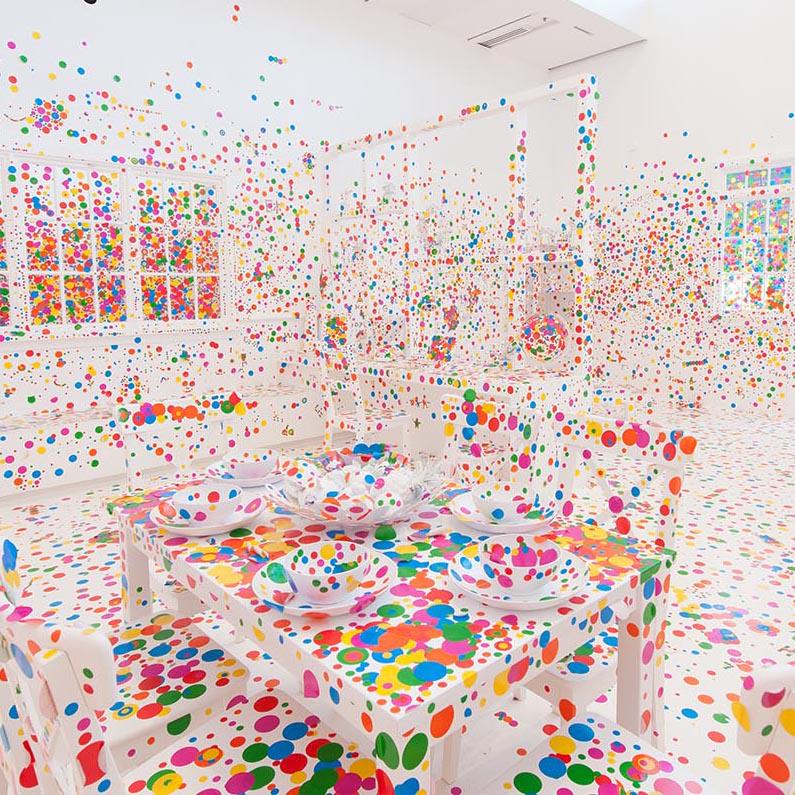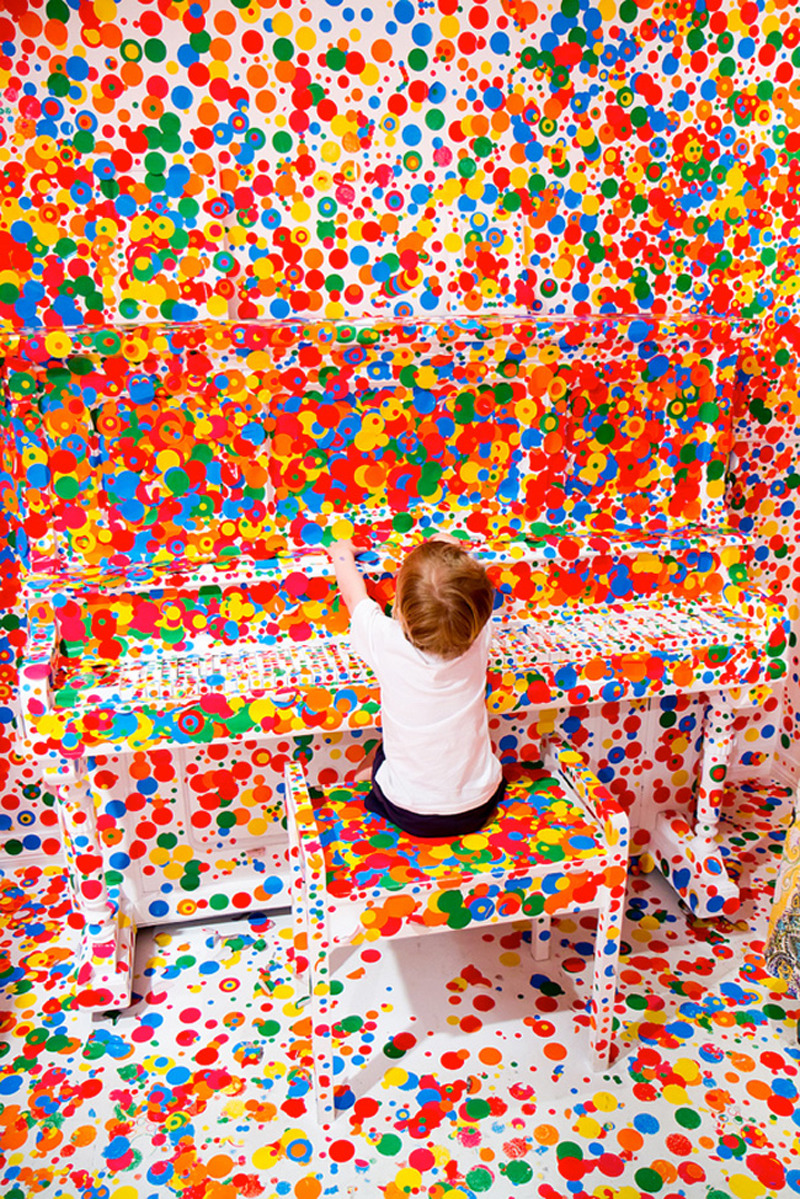

#Obliteration room yayoi kusama series
But the series reached its high point with sculptures featuring ready-made objects festooned with phalli. A group of works made using egg cartons, arranged to create rows and rows of hump-like forms, followed. Sometimes, this is done through the bringing together and arranging of one kind of object-for some of her most famous works in the series, she laid out airmail stickers in neat rows, creating eye-popping patterns that, from far away, look like more orderly versions of the all-over compositions of the Abstract Expressionists. Kusama’s interest in recurring forms reached its greatest expression with her “Accumulations” works from the 1960s, which often feature canvases and objects that are cluttered with repeating visual motifs. Kusama’s “Accumulations” sculptures in a 2017 exhibition at the Hirshhorn Museum and Sculpture Garden in Washington, D.C. (Since 1977, she has been hospitalized in Tokyo by choice.) “I don’t consider myself an artist I am pursuing art in order to correct the disability that began in my childhood,” Kusama once said, referring to her mental illness. Curator Lynn Zelevansky, who organized a landmark show about Kusama’s New York years that appeared at the Los Angeles County Museum of Art and the Museum of Modern Art in 1998, has argued that the paintings have a lot to do with Kusama’s childhood hallucinations of dots and recurring patterns. But Kusama’s concerns were not merely formal.

Looked at today, the paintings seem to foreshadow the move toward Minimalism and, later, Post-Minimalism during the ’60s and ’70s critic Lucy Lippard even curated Kusama’s work alongside abstractions by Minimalist artists. Although it is something of both, certainly of such Americans as Rothko, Still and Newman, it is not at all a synthesis and is thoroughly independent.” Because her art of the era dovetailed neatly with some of the geometric abstractions being produced by avant-garde groups in Italy, Germany, and elsewhere, Kusama’s work was more often seen in Europe than it was in New York during the ’60s. Artist Donald Judd, who later became Kusama’s romantic partner, was known to be a tough critic, but even he was among its admirers, writing in ARTnews, “The expression transcends the question of whether it is Oriental or American. Kusama wrote that she intended the white paintings to be “like a bomb,” and judging by the reviews, the critics heard the explosion.

solo show, at New York’s Brata Gallery, where she exhibited white-on-white paintings that seemed to barely even be there. Just a year and a half after her arrival, Kusama had her first U.S. Many took the form of watercolors and ink drawings that made use of repeated patterns some even included the polka dots that would later become her signature motif. When Kusama first arrived in New York in 1958 from Tokyo, where she had experienced commercial success, she brought with her around 2,000 works on paper. Long before the “Infinity Rooms,” there were the “Infinity Nets,” a series that, though far less baroque in its form, drew on similar themes. ©Yayoi Kusama/Courtesy David Zwirner, New York Ota Fine Arts, Singapore and Tokyo and Victoria Miro, London and Venice


 0 kommentar(er)
0 kommentar(er)
